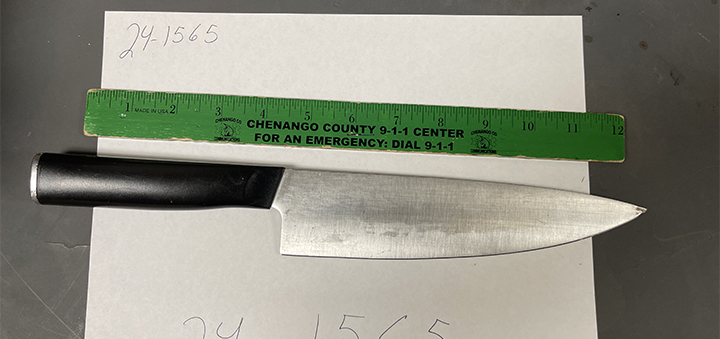Outdoor Chenango: The Versatility Of The Stickbait
Published:
June 23rd, 2021
By:
Eric Davis

When I was in high school, I became friends with a classmate and his brothers who were all hardcore bass fishermen. Tucker, one of the older brothers, had a bass boat with a monstrous outboard motor on it. As I stood in awe of the size of it the first time I visited their farm, I learned the point of the outboard was to go as fast as possible to your spot when fishing in a tournament.
Though I had never thought of entering a tournament, I quickly learned that the boys were always serious in their fishing as if they were always in a tournament.
So, as we started to fish together, I quickly picked up on a lot of things that I had not ever seen or heard of before. One of those things was using a stickbait. The senko from Gary Yamamoto is the most known stickbait, in my opinion.
My experience up until that point when using soft plastic lures was to always use something with a curly tail. Using a plastic worm without a tail seemed like a foolish way to catch fish because there was nothing to attract the fish to the lure. I quickly learned how that was far from the truth. I watched my friend skip a wacky-rigged stickbait under a dock, quickly set the hook, and reel in a nice bass. Then a few docks later, the same thing happened again. After that day, I went to the store and bought a handful of bags of stickbaits because I did not want to ever be without them. In the months following that, I fished stickbaits in about every possible fashion and a couple of ways worked best.
Wacky rigging had become a fad in the few years before I saw it. It is hands-down the best way to fish a stickbait. When the hook is in the middle of the worm, as the worm sinks it almost flutters as it descends, and that action gets the fish to bite. To wacky rig a stickbait, all you do is bend the worm into a U-shape and then put the hook through the middle of the worm at the bend. The hook itself does not matter a ton but different hooks will affect the sink rate of the worm and can influence how easily it gets snagged with vegetation. Cast your stickbait out and let it sink with a taut line so you can feel any bites. If it sinks all the way to the bottom, just lift up your rod, reel in a few feet of line, and let it sink to the bottom again. Skipping a wacky-rigged stickbait is easy since it is so flat. It takes a little bit of practice, but you can become proficient in an afternoon. In lakes with a lot of houses and docks, tournaments can be won just by skipping stickbaits to bass hiding in the shade provided by the docks.
My second-favorite way to fish a stickbait is weightless Texas-rigged. The Texas-rig uses a hook with a specific bend to make the lure weedless and a sliding weight on the line which forces the lure to drag along the bottom. By removing the weight, the stickbait has a similar sinking action as when wacky rigged. I liked fishing this way along the edges of dense weed beds. I would cast into the weeds and let the stickbait sink into them before retrieving it the same way as when wacky rigged. If the weeds are too dense, you can add a weight to try to get deeper into the vegetation where fish might be hiding. A weightless Texas-rigged stickbait was always ready on a spinning rod when I would use floating frogs.
If a bass tried to eat the frog but missed it or I missed setting the hook on it, I would throw the stickbait to where it happened and oftentimes, the fish would bite instantly.
While there are other ways it could be fished, the wacky rig and the weightless Texas rig were the two best ways I found to fish stickbaits. If you have not tried them before, I encourage you to try them this summer.
Author: Eric Davis - More From This Author
Comments





(1).jpg)

